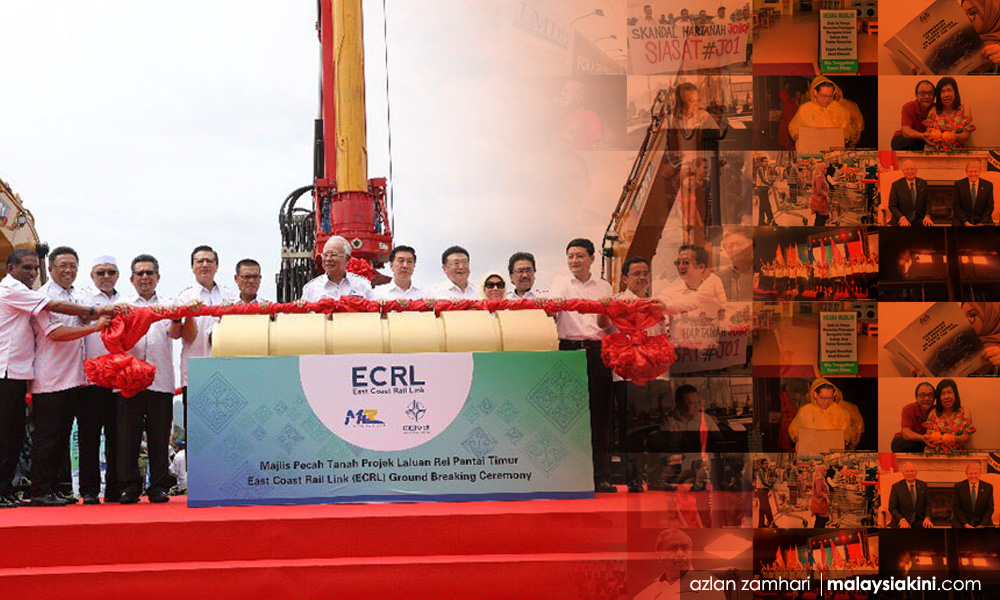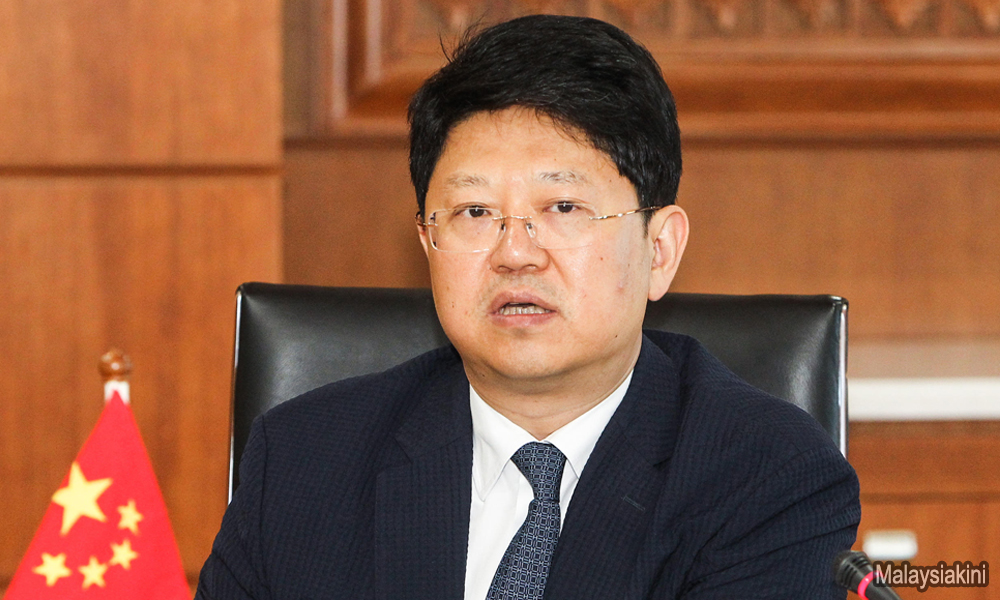
It doesn’t take a rocket scientist to figure out that both the Kuala Lumpur-Singapore High-speed Railway (HSR) the East Coast Rail Line (ECRL) will not be money-making ventures.
As Prime Minister Dr Mahathir Mohamad himself said when calling off the HSR deal on Monday, "We will make no money at all from this operation.”
The high-speed train would have sat on a 350km track, but only 15km or four percent of this would have been built on Singaporean land. Yet it is the island republic which is dictating the terms for the RM110 billion project – especially for competitive benchmarking and international bids.
This probably explains why construction has yet to commence, despite the deal being inked over five years ago. Even its completion date was pushed back by six years to 2026.
But the decision to scrap the project will come at a great cost, with Mahathir estimating that the penalty for withdrawing from the bilateral agreement will come up to about half a billion ringgit. "This is a final decision, but it will take time because we have an agreement with Singapore,” he said.
A high-speed rail link between Kuala Lumpur and Singapore had previously been proposed in the late 1990s, but was shelved soon after due to high costs.
In 2006, YTL Corporation revived the proposal, but the government pulled the plug two years later, again citing concerns over the price tag – RM8 billion, compared to the RM110 billion today.
New Silk Road
Like the HSR with Singapore, the ECRL is also built based on a signed agreement with China that Malaysia has to honour.
The ECRL will be built using a soft loan from China's Export-Import Bank, by China contractors with China labour, and materials imported from China, down to the tax-exempt nuts and bolts.
Earlier this month, the Council of Eminent Persons announced that the project will have a price tag beyond the RM55 billion disclosed by the previous administration, with Daim Zainuddin saying the figure was only “for the first phase of the project.”

But no decision has been made so far on scrapping the ECRL, with China’s ambassador to Malaysia Bai Tian (photo) saying last week that the project has started smoothly, with main contractor, China Communications Construction Company Ltd, working closely with project owner, Malaysia Rail Link Sdn Bhd.
As I wrote in my book The Dragon Stirs – China's New Silk Road, the ECRL will be Malaysia’s signature Silk Road project. This is not a high-speed train, but a coast-to-coast electric double-tracked line. The 600km alignment begins at Tumpat and runs down the coastline to Kuantan, where it veers sharply to cross the main range to reach Port Klang.
High cost
Estimates for the ECRL have gone up from RM29 billion to RM55 billion, or by 90 percent. This works out to RM91.67 million per km, making it possibly the most expensiveinterstate rail and cargo line in the world.
With a revised minimum price tag of RM66 billion – as announced by Daim – the cost per km will go up further, to RM111.11 million at least.
The HSR, meanwhile, works out to be RM314.28 million per km, if the RM110 billion figure is accurate.
According to a World Bank report, China tends to build high-speed railways for cheap, with its own 10,000km network being built at a far lower price than in other countries.
China’s high-speed rail – with a maximum speed of 350 km/h, faster than the HSR at 300km/h – cost about US$17 million to US$21 million (RM67 million to RM84 million) per km, with a high ratio of viaducts and tunnels.
This is two-thirds the price of high-speed railway lines in Europe (US$25 million to US$39 million, or RM99 million to RM155 million per km) and in the United States (US$56 million or RM223 million per km).
Another World Bank report states that the overall financial performance of high-speed train services depends on enough people being able to pay a premium to use them.
In Japan, there is a surcharge for high-speed rail, which doubles the fare on conventional services. China’s high-speed train fares are about three times conventional train fares.
According to the US-based Compass International, the benchmark cost of a new HSR – excluding design and management fees and other nuts and bolts items – is between US$996,875 and $1.1 million (RM3.9 million to RM4.3 million) per km for single track, and between US$1.4 million and $1.6 million (RM5.6 million to RM6.4 million) per km for double track.
According to another estimate, the construction cost per km – excluding planning and land costs – in 45 already constructed projects in Europe varies between €6 million and €45 million (RM27 million to RM206 million) per km.
For 24 projects in operation, the cost varies between €9 million and €39 million (RM41 million to RM179 million) per km. The final investment costs for European railway projects vary between €12 million and €45 million (RM55 million to RM206 million) per km, depending on locality.
So can we make money from the HSR? If the RM314.28 million per km estimate for the HSR is correct, our high-speed rail will cost nearly four times as much as China’s, and significantly more than Europe’s costliest train.
Mahathir is right. We can’t make money by building the most expensive HSR in the world. Time to bite the bullet and cut our losses, RM500 million compensation notwithstanding.
As for the ECRL, consider that China built its high-speed rail for cheaper than the intended electric double-track train. It would be cheaper to fly those in Kelantan to Kuala Lumpur by AirAsia, or even MAS, than to take the train.
BOB TEOH is a media analyst and author of The Dragon Stirs - China's New Silk Road. -Mkini


No comments:
Post a Comment
Note: Only a member of this blog may post a comment.